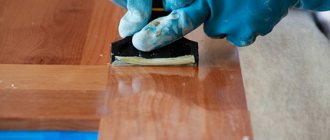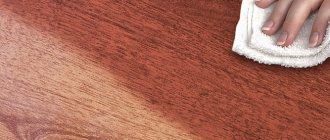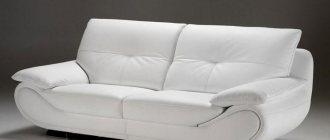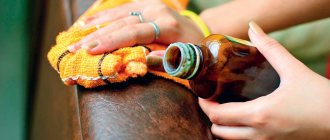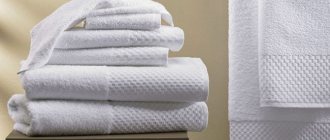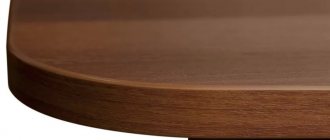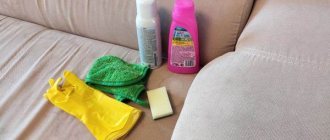Classic types of parquet floors usually have a varnish protective coating. It makes wood floors look more attractive. Parquet varnish also acts as an additional protection for wood from the influence of physical and mechanical stress during operation. Parquet varnish has a special composition, which determines its stability and service life. Over time, the coating will fade, crack, and wear out. To return the floors to their original appearance, you will need to remove the old varnish from the parquet.
You can remove old varnish from parquet manually or using special equipment
Preparation
Before removing the varnish from the parquet, you need to prepare the room for work. First you need to remove the furniture, cover windows, radiators and other non-removable interior parts with film. Use a vacuum cleaner to remove dirt and dust from the surface. And then begin to remove the protective layer.
It’s not enough to know how to remove old varnish from parquet; you also need to prepare equipment in advance. To work you will need:
- sander for the main part of the parquet;
- manual scraper for processing corners and hard-to-reach areas;
- sandpaper of different grain sizes;
- high-power construction or household vacuum cleaner.
There are three ways to remove varnish from wood:
- mechanical;
- thermal;
- chemical.
Consult an experienced specialist
+7 This email address is being protected from spambots. You must have JavaScript enabled to view it.
parquet work in Moscow and Moscow region from 150 rub/m2
Unusual scraping tools
You can completely clean parquet floors of old varnish with your own hands, or rather, with your own feet. To do this, find a pair of flat-soled shoes among your shoes and glue sandpaper to the bottom. The first “pass” must be made with abrasive No. 40 (primary grinding), the second - with abrasive No. 80 (finishing).
Shuffling your feet is much easier than manually operating on your knees. And the procedure itself will be more accurate.
Some folk craftsmen, among other tools, can find a sample of a handmade scraper, made with their own hands from improvised materials. Actually, other tools are used, specially tailored to the task. For example, an iron rod of a plane with a hooked tip.
The sharp end must be given the required shape:
- the metal is heated to red;
- cools slightly in natural conditions;
- clamped in a vice with a pipe;
- the end is bent along the pipe with light, even blows of the hammer;
- the angle is adjusted;
- heats up;
- The outer side of the bend is sharpened.
Manual scraping of parquet will be easier if you use scrapers adapted for this task. The tool is prepared in the same way as a converted plane tip.
A scraper is a hand-held non-mechanical cleaning tool used by ship repairers and shipbuilders. They can remove scale, loosen and remove rust, clean off old paint, and remove various contaminants, including deep ones.
How to remove varnish from parquet mechanically
Removing varnish mechanically involves removing the top decorative coating using abrasive materials and tools.
To do this you will need:
- sandpaper;
- Sander;
- cycle.
You need to start removing varnish by sanding. It is necessary to remove at least 1 mm of the top layer. First you need sanding paper with large grains, which is inserted into the machine. When working with a grinder, you need to wear a protective suit and a respirator to avoid breathing harmful dust.
If the parquet is laid in a herringbone pattern, you need to drive in the direction of the pattern. If parquet flooring is laid in a deck manner, stripping is carried out from corner to corner of the room. Otherwise, the sander will tear the wood, damaging the structure.
Along the walls, cleaning is done with a hand scraper or angle grinder. The second and third times, cleaning is done with medium- and fine-grained sandpaper. After sanding, dust and dirt are removed with a construction vacuum cleaner.
Choosing varnish for parquet
Criterias of choice
When initially deciding on a varnish for a parquet surface, you need to understand what kind of load it must withstand, so that you don’t have to remove the varnish from the parquet too soon. Today, the construction market is overflowing with various varnish substances that differ from each other in technological parameters, chemical components, and application options.
Basically, consumers pay attention to the following main varnish-containing substances:
- water-free polyurethane;
- water soluble;
- acid-curing;
- primers;
- manufactured on oil resins.
Some of them are glossy and reflect approximately 70–100% of light, others are characterized by semi-gloss (30–70% of light). Semi-matte and matte are dull and discreet, hiding blemishes and surface defects. What does shine depend on? On the degree of presence of filler in the material, which scatters light.
Types of varnishes for parquet
As for abrasion resistance, the highest quality in this regard are polyurethane and waterless varnishes. Acrylic, on the contrary, is not durable, but at the same time it withstands the influence of chemical compounds from the outside.
Polyurethane varnishes
Plastic varnishes fit perfectly on the surface and are applied in a thin layer.
Be careful not to allow any liquid to come into contact with the material during drying, which will ruin the finish and foam the newly applied material. Interestingly, this substance is also used as a “glue” that connects parquet components.
Parquet coated with polyurethane varnish
Water soluble
Thanks to water, they are non-flammable and have no unpleasant pungent odor.
During application, experts advise maintaining a temperature of 18–20 degrees with a humidity of 50% or more in the room. It is optimal to coat parquet with varnish using a roller.
Apply varnish to the parquet using a roller
Primers
They protect parquet flooring edges from curvature and deformation. It is important to apply the material by moving the brush along the grain of the wood. Drying times vary: from 15 minutes to 3 hours.
Parquet floor primer
Varnishes based on artificial oil resins
The resin contained in the substance is perfectly absorbed by wood. This type of material requires oxygen to dry.
There is no need to prime the surface before applying varnish. Don’t be surprised if, after hardening, the varnish turns the parquet into a completely different color; it also dries better with a good ventilation system and an average air temperature; it does not tolerate sudden changes and fluctuations in temperature conditions.
When working with this type of varnish substances, it should be borne in mind that they are toxic, which means you should always remember safety measures - wear a respirator and use gloves.
Acid-curing substances
Before applying such varnish, it is necessary to dilute it with acid and hardener. It is this material that provides the hardest and most reliable parquet coating. The presence of alcohol in the composition forces craftsmen to ventilate the room well while applying the material.
It is ideal to cover the varnish substance in three layers; it dries for at least a day, but will also last quite a long time.
How to remove varnish from parquet manually
Many users ask how to remove nail polish without equipment at home. You can manually remove the old coating, but it will take more time. Again, you can’t do without a tool at all.
You can remove the paint with simple coarse sandpaper. The work is dusty, but brings good results. You can additionally level the base with sandpaper.
It will be problematic and time-consuming to process the entire area of the room, but sandpaper is perfect for corners, niches, removing local stains or areas under radiators. After sanding the floor, the work is not finished. You need to apply BF-6 glue to the surface, and then use a solvent.
These methods benefit from the absence of chemicals that negatively affect health. When cleaning, the structure of the tree is not disturbed. After sanding, the parquet will be like new.
Machine scraping method
Should I hire professional parquet floorers to solve the problem of restoring wooden floors? Not everyone has this opportunity. Often it all comes down to price. Local restoration can be carried out independently; it is enough to purchase the necessary equipment and fresh parquet chemicals.
Large-scale restoration of the varnish coating will require preliminary scraping or sanding. First you need to determine how many cycles the parquet product corresponds to. The more decorative the parquet, the fewer cycles it has. With a lamella thickness of 15 mm, the floor will withstand up to 5 cycles, 8 mm or less - no more than 2-3 times.
Sanding is carried out with a special electric machine that can be bought, which is very cumbersome, because it is rarely used at home. It is better to rent it from a company that provides such parquet repair services.
You can rent a sanding machine
How to remove old varnish from parquet using a thermal method
The hot method involves heating the protective layer to the melting point. The varnish softens, and then it can be removed with a metal spatula. You need to wear gloves and the room should be well ventilated.
You can heat the floor with a gasoline or gas lamp.
They are sold in hardware stores and are inexpensive. You need to work very carefully, as there is a risk of causing a fire. It is safer to work with a hair dryer. It is necessary to set the desired temperature and heat the surface evenly. It is convenient to remove the melted varnish with a metal spatula.
How to remove varnish from a parquet board?
I’ll share my experience in stripping wood with different tools and, since the topic is similar, I’ll ask my own questions...
About 9 years ago I was renovating old wooden windows at my parents’ house - I stripped them down to the wood from numerous layers of paint that had accumulated over 30 years. I experimented as best I could, using the entire arsenal that I had at that moment: a drill with a circle attachment (a round sanding disc), a hair dryer and some kind of chemical filth. In addition to a hairdryer and chemicals, respectively, I used a couple of metal spatulas (hard and soft), and hand-sanded sandpaper on small blocks. I didn't like chemistry at all. Besides the fact that it stank terribly (even though I ventilated it while working in the opening of an open window, I still inhaled it, bless me. And I didn’t appreciate it somehow. Maybe I did something wrong. The hairdryer also didn’t impress me - the paint under its heat it bubbled and began to spread across the wood. As a result, some of it was scraped off, but what remained, on the contrary, was deeply absorbed into the wood. Moreover, when using chemicals and a hair dryer, when peeling with a spatula, it constantly cut into I knocked out huge chips of wood, then beveled the corners, then drove these chips into my hands.. As a result, I did the main work with a drill with an attachment. I used a round attachment with Velcro, to which I changed the sanding wheels. Krugov, I remember, wore out immeasurably. But , in principle, it wasn’t very expensive in terms of money. In hard-to-reach places and corners, a simple piece of sandpaper and a block were of help. I did all this, I remember, for a very long time. It’s still disgusting to remember the impressions, because there was very little pleasant there But, however, I now have such experience in my practice.
Last summer I practiced stripping pieces of wood using a flap wheel on an angle grinder. I cleaned the fences of old peeling paint. An angle grinder, of course, is a beast! It blows everything away with a bang! But you can completely forget about a flat surface. Yam dug these, wow! Well, in this case, the evenness of the surface was not critical to me. There is even something interesting in the resulting pits. However, I think it’s worth warning about pits when grinding angle grinders.
I recently acquired a FSM on my farm. So far, I'm doing a great job of sharpening the non-converging corners of the trim. Next summer I am planning a test for her in the form of cleaning the old wooden plank floor on the porch. I'm curious what will come of this. True, there are questions here. The floor was covered with several layers of parquet varnish, which today peels off in places like wood, but in others is still holding on. Is it worth going over, for example, with a grinder with a metal brush, before starting to sand the PSM, to peel off as much of the varnish as possible, or will this be of no use and will only spoil the structure of the wood?
How to remove paint from parquet using chemicals
Removing varnish with chemicals is a dangerous procedure. If you choose the wrong composition or violate the technology, you can damage the parquet. Construction stores sell ready-made removers in the form of powders, gels, and solvents. Chemical liquid compositions work where no more than three layers of varnish are applied. For multi-layer coatings, a gel composition will be required.
If you need to remove varnish from the floor in a large room, it is convenient to use powders. It is diluted with water, bringing it to a paste.
When working with chemicals, you need to wear a protective suit, goggles and a respirator. The remover is applied with a brush. The holding time of the composition is three to four hours. The soft varnish is removed with a metal spatula. Remains of varnish can be removed with water and vinegar mixed in a ratio of 5 to 1.
Removing old varnish is only the initial stage of restoration. After this, you will also need to prime and sand the floor. The final stage is varnishing.

